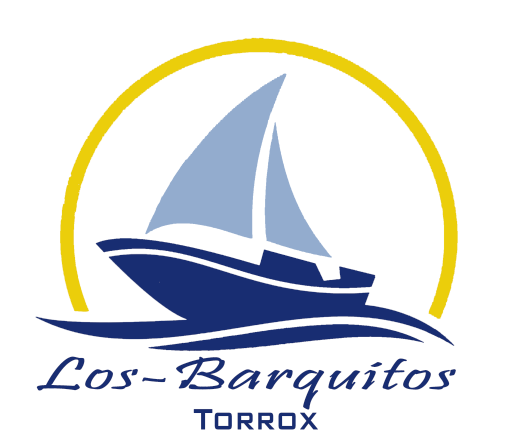
While total equity shows the book value of a company, market capitalization represents investor perception and can be significantly higher or lower than the book value. Return on common equity is a measure of how well a company uses its investment dollars to generate profits. Often times, it is more important to a shareholder than return on investment (ROI). It also tells common stock investors how effectively their capital is being reinvested.
What Is Included in Total Equity?

Companies must comply with regulatory requirements, such as those by the SEC, to ensure transparency in reporting treasury shares. Additional paid-in capital reflects the excess amount investors pay over the par value of stock during total common equity formula a public offering. For example, if a company issues shares with a par value of $1 and the market price is $10, the additional paid-in capital is $9 per share. This figure indicates the capital raised by the company for purposes such as business expansion or debt reduction. On the balance sheet, additional paid-in capital enhances the company’s financial flexibility and is listed under the equity section.
How to Spot Stock Market Trends: A Guide to Smart Investing
The resulting percentage indicates the return generated on each dollar of equity invested in the company. A higher ROCE suggests efficient use of equity capital and effective management. However, this figure should be analyzed within the context of industry norms and historical performance.
Interpreting Common Equity on the Balance Sheet
- Preferred equity ranks higher than common equity in liquidation events, meaning preferred shareholders are paid before common shareholders in bankruptcy.
- In the stock market, shareholders’ equity (or owners’ equity for privately held companies) represents the difference between a company’s assets and liabilities.
- Sometimes, a venture capitalist will take a seat on the board of directors for its portfolio companies, ensuring an active role in guiding the company.
- One of the most important financial documents for a company is its income statement.
Many investors view companies with negative shareholder equity as risky or unsafe investments. Stockholders’ equity is a measurement of the general financial health of the company. If the number for stockholders’ equity is negative, it may warn of impending bankruptcy https://www.lgtranslog.com.br/training-certification-2/ (particularly if it is due to a high debt load). From the beginning balance, we’ll add the net income of $40,000 for the current period, and then subtract the $2,500 in dividends distributed to common shareholders.

Once you have the balance sheet, find the section called “Shareholders’ Equity” or “Stockholders’ Equity”. Common Equity Tier 1 (CET1) is a component of Tier 1 capital covering bank holdings such as cash and stock. It is the highest quality of regulatory capital, and banks are expected to meet minimum CET1 ratios, as established How to Run Payroll for Restaurants by financial regulators. A bank’s capital structure consists of Lower Tier 2, Upper Tier 1, AT1, and CET1.
Calculating Common Shares

Regulations, such as those from the Environmental Protection Agency (EPA), can also influence operational costs and profitability. Additionally, depreciation methods, such as straight-line or accelerated depreciation, affect both the equity base and net income, impacting ROCE. Equity, as we have seen, has various meanings but usually represents ownership in an asset or a company, such as stockholders owning equity in a company. ROE is a financial metric that measures how much profit is generated from a company’s shareholder equity. Equity is important because it represents the value of an investor’s stake in a company, represented by the proportion of its shares. Owning stock in a company gives shareholders the potential for capital gains and dividends.
- A common measure of a company’s capital structure is the common equity ratio, which is the ratio of common stockholders’ equity to total assets.
- Nevertheless, the owners and private shareholders can still compute the firm’s equity position using the same formula and method as with a public one.
- The Book Value formula calculates the company’s net asset derived by the total assets minus the total liabilities.
- This is often beneficial because it allows companies and investors alike to see what sort of return the voting shareholders are getting if preferred and other types of shares are not counted.
- The stockholder’s equity is available as a line item in the balance sheet of a company or a firm.
- If this figure is negative, its liabilities exceed its assets; this can deter investors who view such companies as risky.
ROE often can’t be used to compare different companies in differing industries. ROE varies across sectors, especially as companies have different operating margins and financing structures. In addition, larger companies with greater efficiency may not be comparable to younger firms. Now, assume that LossCo has had a windfall in the most recent year and has returned to profitability. The denominator in the ROE calculation is now very small after many years of losses, which makes its ROE misleadingly high.
A bank’s Tier 1 capital must include a minimum ratio of 4.5% of CET1 to its risk-weighted assets (RWAs). Capital is required to be held by banks to absorb unexpected losses that arise during the normal course of the bank’s operations. The Basel III framework tightens capital requirements by limiting the type of capital that a bank may include in its different capital tiers and structures. Thus, common equity offers the most upside, but also represents the most risk. Meanwhile, investors who bought the company’s bonds continue to receive interest payments of equal amounts, spaced exactly six months apart.
- Likewise, if a company is dissolved, its assets go first towards repaying debtors and preferred stockholders (Sharestates notes that preferred stock behaves in some ways like both equity and debt).
- ROCE interpretation can vary widely across industries due to differing financial structures and operational dynamics.
- Analysts should evaluate how effectively these companies manage their assets to optimize returns.
- Share capital is the money a company raises by selling its shares to shareholders in exchange for cash.
- Understanding the common equity formula is crucial for investors and financial analysts as it provides insights into a company’s financial health and ownership structure.
- For example, while a company’s ROCE might seem strong in isolation, it could lag behind the industry average, signaling room for improvement or competitive disadvantages.
- Shareholders’ equity is the residual claims on the company’s assets belonging to the company’s owners once all liabilities have been paid down.
Is total equity always a positive number?
They typically receive dividends before common shareholders and have priority in the event of liquidation. However, preferred shareholders usually don’t have voting rights, while common shareholders do. Tangible common equity (TCE) is a measure of a company’s physical capital, which is used to evaluate a financial institution’s ability to deal with potential losses. It is often used when analyzing financial firms that do not normally have a large amount of tangible assets, such as banks, which also use it to measure capital adequacy.
